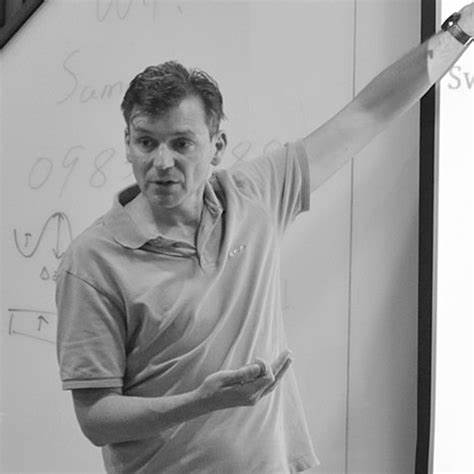时间:2024年10月15日(周二)15:00 − 17:30
地点:九龙湖校区田家炳楼南203平星报告厅
主持人:林维维
报告一题目: Single femto-second laser pulse to switch magnetization in a spintronic device
报告人: Stéphane Mangin教授 (Institut Jean Lamour, Université de Lorraine-CNRS)
报告摘要:
Deterministic magnetization switching induced by a single femtosecond or picosecond laser pulse, resulting from the direct interaction between the ultra-short laser pulse and the magnetization has been reviewed recently in [1]. They have demonstrated that light can generate spin-polarized femtosecond current pulses to reverse the magnetization of thin ferromagnetic films in magnetic heterostructure [2-7]. They have shown ultra-fast magnetization reversal (in less than one pico-second) [3] in various perpendicularly magnetized ferrimagnetic and ferromagnetic spin-valve structure [4-7]. Those results open the field of ultra-fast spintronics.
[1]Y. Xu and S. Mangin, J. Magn. Magn. Mater. 564, 170169 (2022).
[2]J. Gorchon, M. Hehn, G. Malinowski, and S. Mangin, J. Magn. Magn. Mater. 563, 169919 (2022).
[3]Q. Remy, et al. Nat. Commun. 14, 445 (2023).
[4]S. Iihama, et al. Adv. Mater. 30, 1804004 (2018).
[5]J. Igarashi, et al. Nano Lett. 20, 8654 (2020).
[6]Q. Remy, et al. Adv. Sci. 7, 2001996 (2020).
[7]J. Igarashi, et al. Nat. Mater. 114, 36 (2023).
报告人简介:

Stéphane Mangin is a Full Professor at Université de Lorraine where he leads the research team Spintronics and Nanomagnetism at Institut Jean Lamour. He holds a PhD in Physics from Université Joseph Fourrier in Grenoble. He is a fellow of the American Physical Society, a fellow of the IEEE Magnetic Society and a fellow of the Churchill College at Cambridge University. He is a Co-Founder of the French-US International Associated Laboratory on Nanoelectronics at UC San Diego. He is a senior member of the Institut Universitaire de France. Stephane Mangin and his team have had a strong impact of the field of ultra-fast magnetization manipulation.
报告二题目:Spin current production beyond the spin Hall effect symmetry
报告人:Juan Carlos Rojas-Sánchez 研究员 (Institut Jean Lamour, Université de Lorraine-CNRS)
报告摘要:
I will review the symmetry of the Spin Hall effect (SHE) in 3D systems and Edelstein effect (EE) in 2D systems for the interconversion of charge current into spin current due to spin-orbit coupling (SOC) [1]. A gain has been shown in 2D systems dominated by the Edelstein effect or its reciprocal, IEE such as on α-Sn [2] in comparison with 3D systems such as Pt [1]. We have recently reported a giant and anisotropic value combining 3D systems such as Fe and Pt, and 2D systems such as epitaxial graphene [3]. We found a 34-fold gain in the double Rashba interface quantum system, Fe/Gr/Pt, with respect to the reference, Fe/Pt. This is in sharp contrast when the ferromagnetic layer is Co where there is a reduction of the overall efficiency in Co/Gr/Pt [4].
I will also show other symmetries beyond the SHE/EE. For instance, the spin anomalous Hall effect (SAHE) in magnetic materials with non-negligible SOC. Here, a spin current JS have the spin polarization σ parallel to the magnetization of the FM layer. Additionally, JS might also have SHE symmetry, i.e. spin polarization perpendicular to the charge current JC injected [5,6]. We have shown a large efficiency in the direct effect, which lead towards self-torque effect in GdFeCo [5]. We reported an overall efficiency, combining SAHE and SHE symmetries, of about 0.8 [5,6]. Recently, we have also studied the inverse effect in FePt where we elaborated the protocol of the spin-orbitronic parameters determination by self-induced spin pumping ferromagnetic resonance [7].
Finally, I will briefly mention studies in low symmetry material, such as NbIrTe4, which allows the production of spin current with polarization parallel to the direction of the spin current produced [8]. This allows the switching of the magnetization, spin-orbit torque, without any additional magnetic field which is still required in typical FM/heavy metal systems such as the robust W/CoTb system [9].
Funding from ‘Toptronic’ ANR JCJC project (grant ID ANR-19-CE24-0016-01), EU-H2020-RISE project Ultra Thin Magneto Thermal Sensoring ULTIMATE-I grant ID 101007825, and ERC CoG project MAGNETALLIEN grant ID 101086807, among others, is gratefully acknowledged.
[1] J.-C. Rojas-Sánchez and A. Fert, Phys. Rev. Appl. 11, 054049 (2019).
[2] J.-C. Rojas-Sánchez, et al. Phys. Rev. Lett. 116, 096602 (2016).
[3] Anadon, et al. arXiv:2406.04110.
[4] Anadon, et al. APL Mater. 9, 061113 (2021).
[5] Céspedes-Berrocal, Damas, et al. Adv. Mater. 33, 2007047 (2021).
[6] Damas, et al. Phys. Stat. Solid. (RRL) 16, 2200035 (2022) invited.
[7] Ampuero, et al. arXiv:2405.11948.
[8] Yang, et al. To be submitted.
[9] Pham, et al. Phys. Rev. Appl. 9, 064032 (2018).
报告人简介:

J.-Carlos Rojas-Sánchez is a CNRS permanent researcher at Institute Jean Lamour, Nancy, France. He received his Ph.D. in Physics in 2011, both from Balseiro Institute (National University of Cuyo), Bariloche Atomic Center, Bariloche, Argentina. From 2011-2015, he was a postdoctoral fellow in Laboratoire de Nanostructures et Magnetisme INAC/CEA, SPINTEC, Institut Néel, and Unité Mixte de Physique CNRS/Thales, France. His main research interest includes spintronics, spin current, spin Hall effect, Edelstein effect, spin-orbit torque, and spin-orbitronics experiments in 3D and 2D systems.
